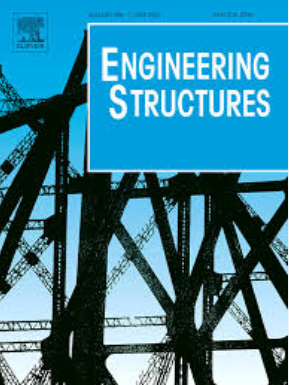An intelligent method for leakage segmentation and area quantification to evaluate the safety performance of tunnels
IF 5.6
1区 工程技术
Q1 ENGINEERING, CIVIL
引用次数: 0
Abstract
Water leakage in tunnels affects the structural stability and operational safety of tunnels, and timely inspections and repairs are needed. Traditional manual inspection methods are less automated and less efficient, which cannot meet the rapid inspection of tunnels. In this study, YOLO v8-DBC is proposed for tunnel water leakage segmentation and area quantification. In the backbone, a new Cross Stage Feature-Dynamic Snake Convolution (C2f-DSC) module is designed to improve the ability of the network to extract features of complex structures. C2f-DSC adaptively focuses on meandering and slender local structures, which better captures information about the edges of water leakage. In the neck, Bi-directional Feature Pyramid Network (BiFPN) enhances the fusion of deep and shallow information features. Convolutional Block Attention Module (CBAM) enhances the attention of the model to local and spatial information and reduces the interference of noise and irrelevant features. The results showed that YOLO v8-DBC segmentation is better than YOLO v8, YOLO v6, and YOLO v5, with the mAP50 (S) of 0.881 and the mIoU of 0.823. The area of tunnel leakage is calculated by the binary segmentation technique of the image. The tunnel water leakage hazard level is evaluated based on the area of leakage and technical code for waterproofing of underground works. The proposed method applies to the leakage segmentation and safety performance evaluation of tunnels, offering a reference for construction personnel in decision-making.
一种用于隧道安全性能评估的智能渗漏分割和面积量化方法
隧道漏水影响隧道的结构稳定和运行安全,需要及时检查和维修。传统的人工检测方法自动化程度较低,效率较低,无法满足隧道的快速检测。本研究提出了YOLO v8-DBC用于隧道漏水分割和面积量化。在骨干网络中,设计了一种新的跨阶段特征-动态蛇形卷积(C2f-DSC)模块,以提高网络对复杂结构特征的提取能力。C2f-DSC自适应地聚焦于弯曲和细长的局部结构,可以更好地捕获渗漏边缘的信息。在颈部,双向特征金字塔网络(BiFPN)增强了深、浅信息特征的融合。卷积块注意模块(CBAM)增强了模型对局部和空间信息的关注,降低了噪声和无关特征的干扰。结果表明,YOLO v8- dbc分割效果优于YOLO v8、YOLO v6和YOLO v5, mAP50 (S)为0.881,mIoU为0.823。利用图像的二值分割技术计算隧道泄漏面积。根据隧洞渗漏面积和《地下工程防水技术规范》对隧洞漏水危险性等级进行了评价。该方法适用于隧道的渗漏分段和安全性能评价,为施工人员决策提供参考。
本文章由计算机程序翻译,如有差异,请以英文原文为准。
求助全文
约1分钟内获得全文
求助全文
来源期刊

Engineering Structures
工程技术-工程:土木
CiteScore
10.20
自引率
14.50%
发文量
1385
审稿时长
67 days
期刊介绍:
Engineering Structures provides a forum for a broad blend of scientific and technical papers to reflect the evolving needs of the structural engineering and structural mechanics communities. Particularly welcome are contributions dealing with applications of structural engineering and mechanics principles in all areas of technology. The journal aspires to a broad and integrated coverage of the effects of dynamic loadings and of the modelling techniques whereby the structural response to these loadings may be computed.
The scope of Engineering Structures encompasses, but is not restricted to, the following areas: infrastructure engineering; earthquake engineering; structure-fluid-soil interaction; wind engineering; fire engineering; blast engineering; structural reliability/stability; life assessment/integrity; structural health monitoring; multi-hazard engineering; structural dynamics; optimization; expert systems; experimental modelling; performance-based design; multiscale analysis; value engineering.
Topics of interest include: tall buildings; innovative structures; environmentally responsive structures; bridges; stadiums; commercial and public buildings; transmission towers; television and telecommunication masts; foldable structures; cooling towers; plates and shells; suspension structures; protective structures; smart structures; nuclear reactors; dams; pressure vessels; pipelines; tunnels.
Engineering Structures also publishes review articles, short communications and discussions, book reviews, and a diary on international events related to any aspect of structural engineering.
 求助内容:
求助内容: 应助结果提醒方式:
应助结果提醒方式:


